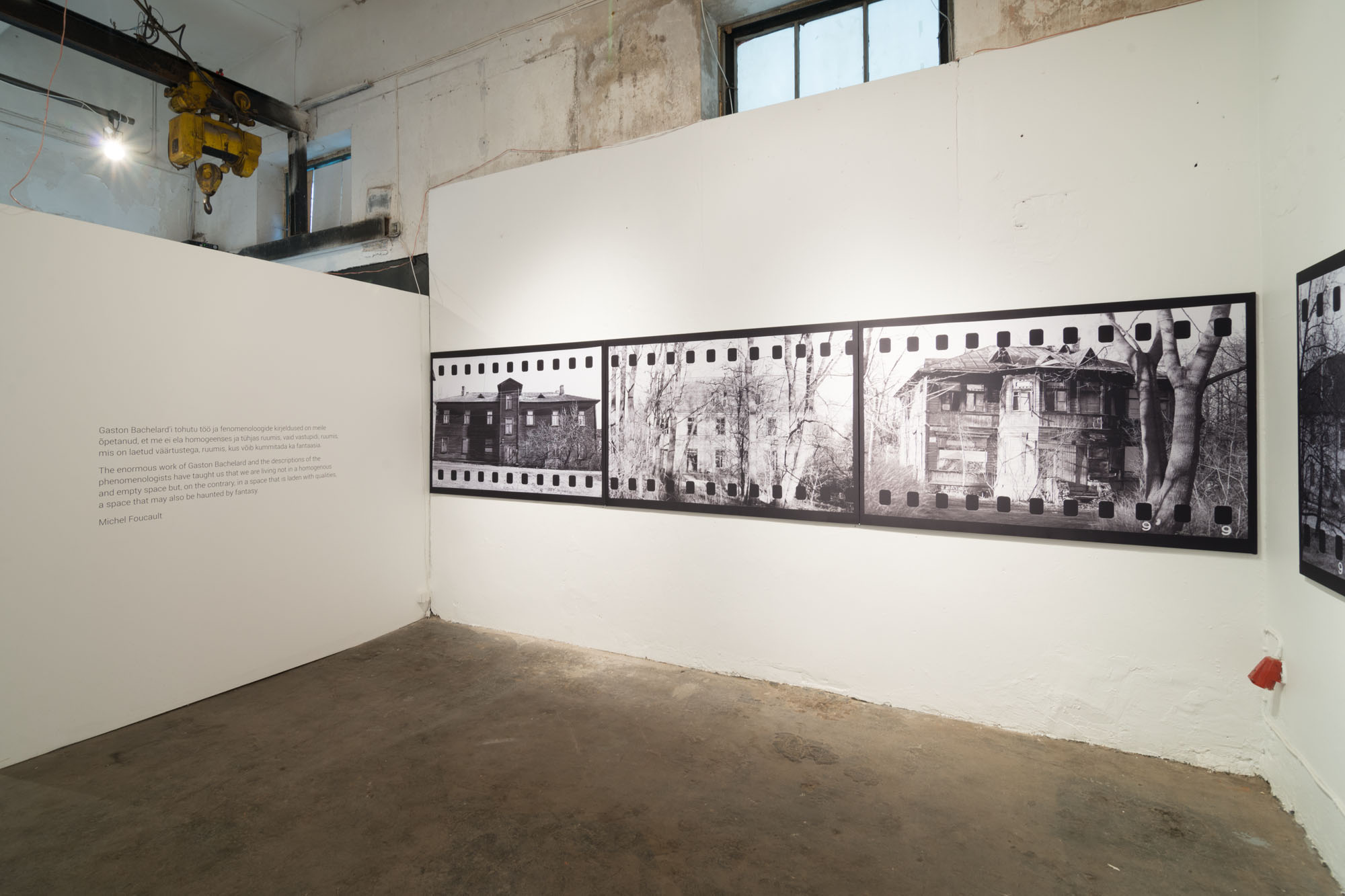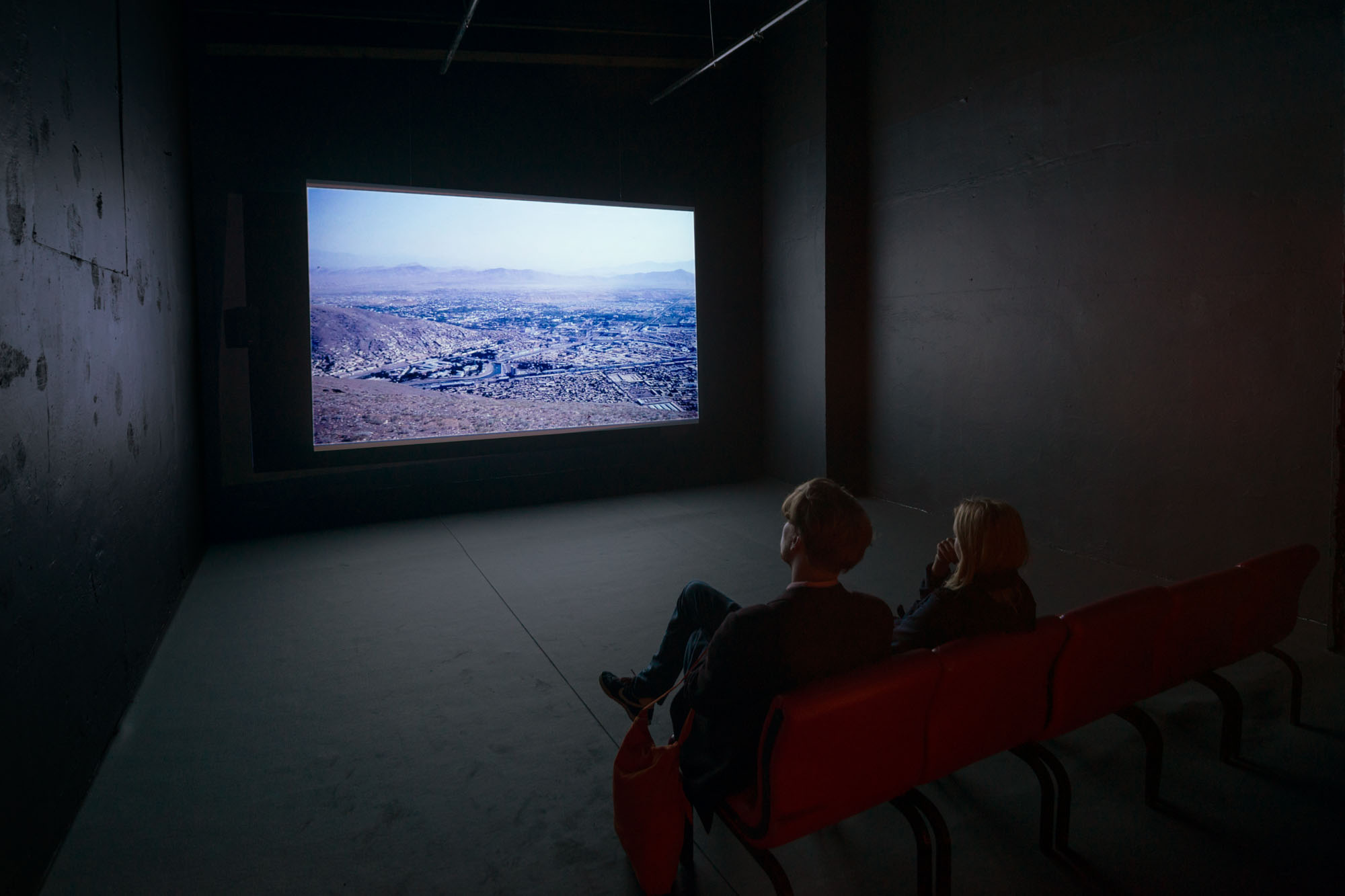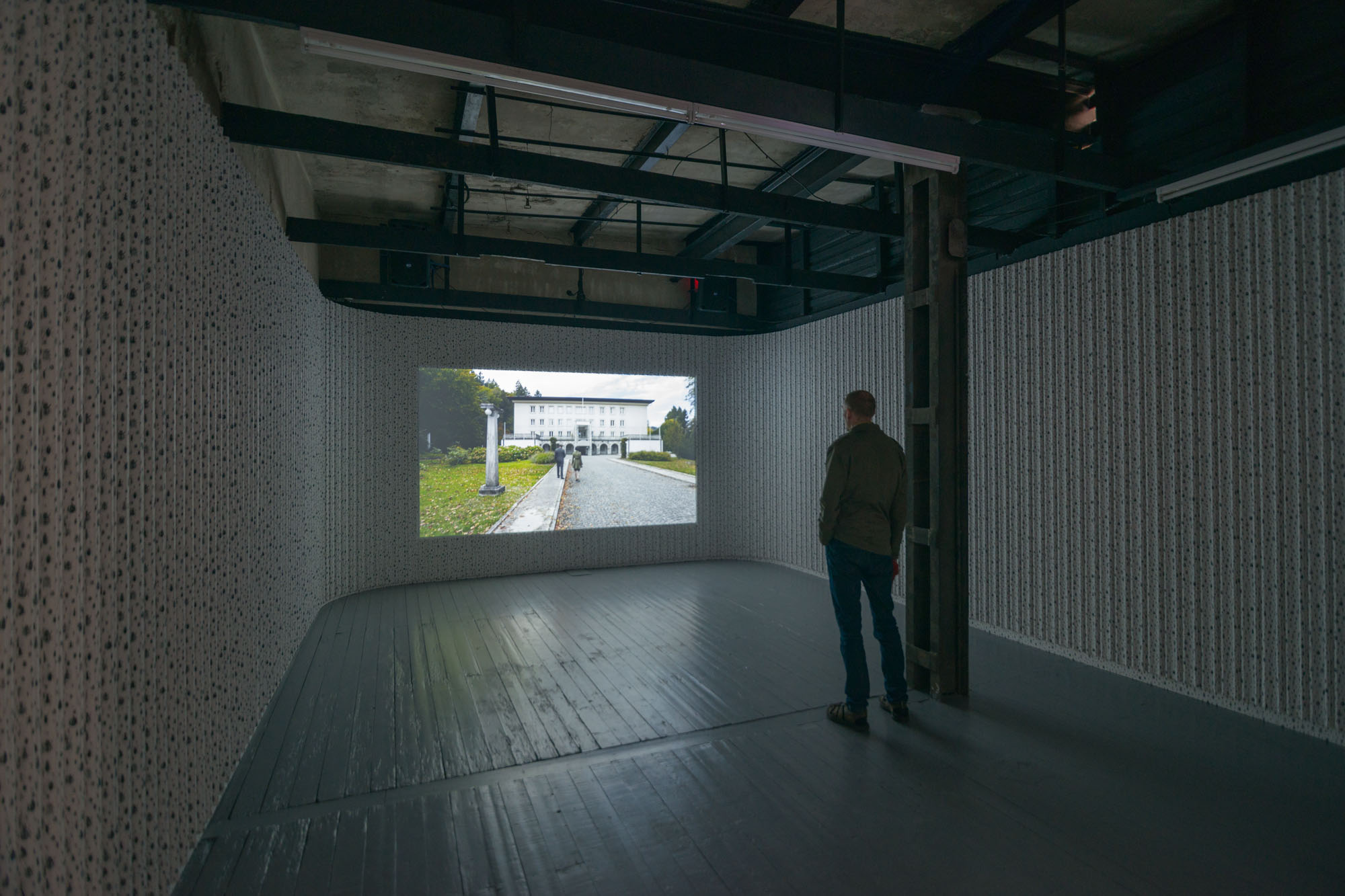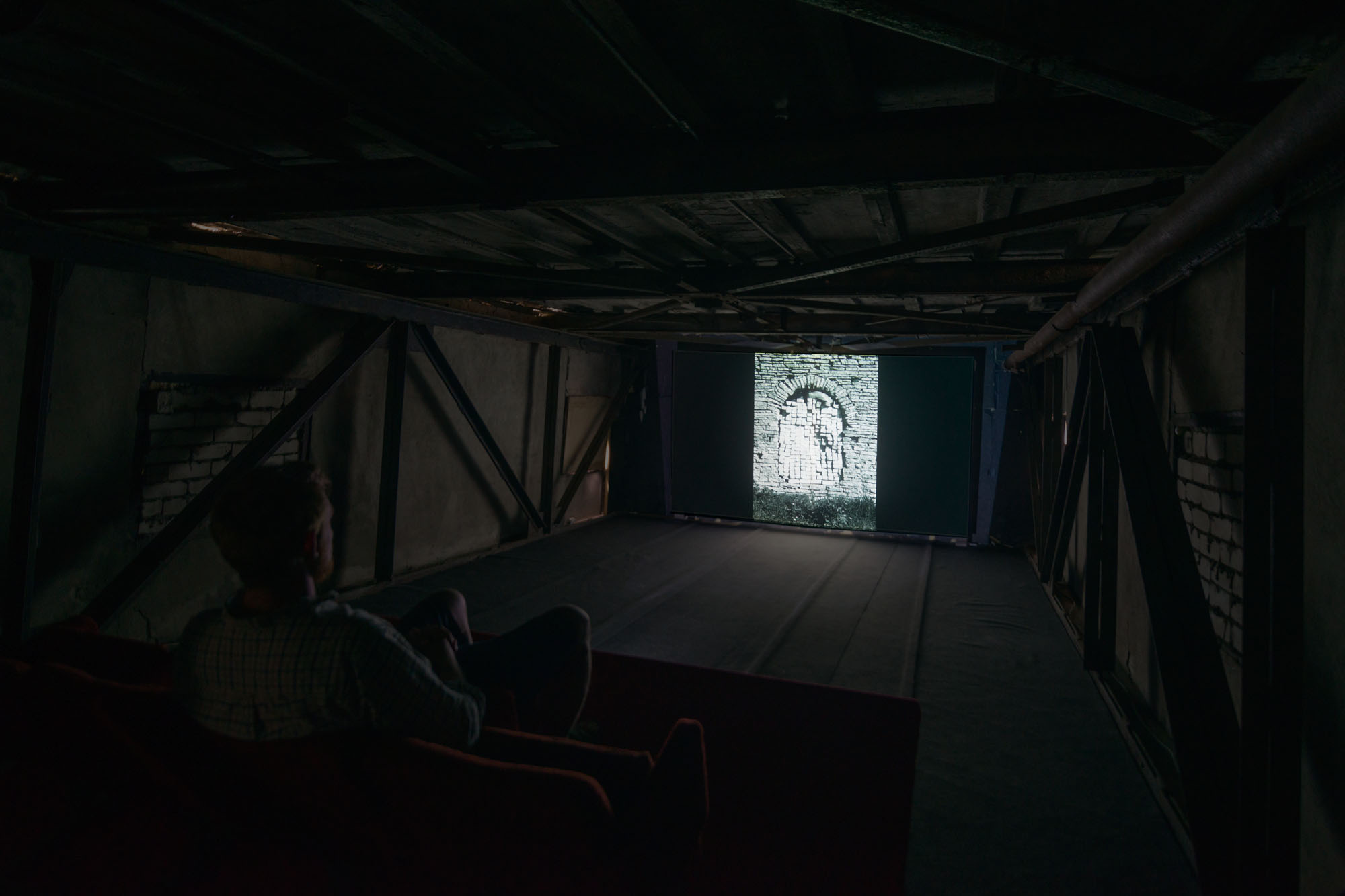Artists
Curator
The enormous work of Gaston Bachelard and the descriptions of the phenomenologists have taught us that we are living not in a homogenous and empty space but, on the contrary, in a space that is laden with qualities, a space that may also be haunted by fantasy.
Michel Foucault [1]
Architecture is for me the exemplary case of how ideology is at work precisely where you don’t think you will find it.
Slavoj Žižek [2]
It was if I saw a room before me. I had discovered a wall; I was contained by a rectangular opening – too angular that I could have believed it to be made for my body; too cool and linear, that I could thought it to be an expected addition to it. /…/ In respect to the objects in the room, I apparently imagined myself as some kind of transitional form, since my body weight was divided unsteadily, but all in all, pretty equally, more or less on two legs.
Anti Saar [3]
In his book Looking Awry Slavoj Žižek hints that a house, or architecture in a broader sense, can serve as a kind of a screen for the projection of desires. He uses the example of Patricia Highsmith’s short story Black House, which takes place in a small American town, where the locus – an abandoned house – functions as an empty surface onto which the local men can project their nostalgic desires, their distorted memories of their first sexual encounters, etc. Entering it supposedly involves mortal danger and is thus forbidden. Several myths surround the building. The house is haunted; it is inhabited by a lunatic who kills intruders, etc. A newcomer to the city, a young engineer, decides to enter the house, finds nothing there, and victoriously returns to tell the residents. By publicly announcing there’s nothing there, that the house which was elevated to the status of the Thing is actually empty, the young intruder reduces their fantasy space into everyday, common reality. As Žižek puts it, “He annulled the difference between reality and the fantasy space, depriving the men of the place where they were able to articulate their desires.”[4]
In a way we might say that the artists exhibited at this exhibition have similar affection to architecture as the inhabitants of Highsmiths’ story. In 1995, the then young photographer Arne Maasik photographed North Tallinn, a working-class district comprised of wooden houses from the late 19thand early 20thcentury. (Also EKKM belongs to this area). Maasik depicts a district that is romantically in ruins, with the houses partly burned and empty. In a way, the whole district functions as a “black house”, as a perfect screen. However Maasik distorts this image by making the materiality of the photos visible. We see that he has photographed over the edges of the film – the technical data and perforation holes – are also a part of the images. There is a kind of correlation or balance between the phantasmatic images and their visible edges, their limits, which might also be interpreted as articulations of the difference between fantasy and reality.
The current exhibition is not an architecture exhibition; it’s an exhibition about architecture. For example, we are not interested in architects and their architectural achievements, although some very explicit buildings appear in many of the works exhibited here (like Villa Bled designed by Vinko Glanz for Josip Broz Tito in Jasmina Cibic’s video Framing the Space]; the famous fascist building Plazzo della Civita Italiana as a 1:36 model in Karl Holmqvist’s piece Untitled [Memorial or House of the Political Education designed by the architect Raine Karp on Eve Kiiler’s photos). But in the framework of this exhibition we are not interested in architecture as an art form, but rather as a screen of desire, a social and political tool. According to Žižek, the paradox of architecture lies in the fact that “it’s not only that the fantasy, which is embodied in the mute language of buildings, can articulate the utopia of justice, freedom and equality betrayed, denied by actual social relations; it can also articulate the fantasy of inequality for clear hierarchical distinctions.”[5] Žižek speaks in this context about Stalinist architecture, in which Stalinism on a rhetorical level spoke of equality, but on an architectural level expressed nothing but the necessity of hierarchies. But this kind of hidden architectural agenda (for example, private spaces like shopping centers that mimic the public space, while many former public areas like the space between apartment buildings, or even some entire areas of the city, are now sealed and fenced off) is even more complex in our late capitalist society. Dénes Farkas uses spatial structures modeled of paper and turned into photographs to demonstrate the repressions of neo-liberalist ideology, thus, literally, revealing the architecture of current capitalist society and perhaps hinting directly at Etienne Balibar’s concept of “capitalism as structural violence”.[6] Or can we even speak of architectural violence? Paul Kuimet’s works are within the realm of a fellow artist depicting a work by sculptor Edgar Viies called Spatial Figure I from 1968 that reminds a Mobius leaf. Viies’s modernist sculptures from the 60s, many of which were large public works and considered nonconformist and ultra-modern by his contemporaries, are charged with a true belief in progress and technology, while Kuimet’s film represents one of them as haunting, inhumane and mechanical.
However, Eve Kiiler’s two photo series show how architecture itself can fall victim to ideological violence. A strange post-modern building – the House of Political Education House completed in 1985 – was transformed into the Sakala Cultural Centre after the collapse of the Soviet Union and demolished in 2007. It was replaced by a shopping centre, the construction of which was defended in public with arguments from the creative economy’s rhetorical arsenal. Kiiler’s photos show the Sakala Centre in the metaphysical and melancholy emptiness of its final days. However, even more symbolic is the diptych of the Trade Union House demolished in 2003 and the City Plaza office building that was erected in its place.
Anri Salas’s extremely touching video Dammi i colori follows a painter-turned- mayor of a relatively small and extremely poor Albanian city. Since the mayor totally lacks the means to run the city, he turns towards the means he knows best– namely paint and colors – in order to revitalize a city consisting mainly of ugly Communist-period buildings. He uses the city as his canvas and produces very beautiful color combinations, while also being fully aware of the fact that he is merely dealing with camouflage. However, there isn’t much more he can do to improve the life of his city’s residents. So he continues to paint obsessively in order to escape the depression he is suffering, and which is quite evident in Salas’s film.
We encounter another kind of obsession in Mario Garcia Torres’s piece consisting of 89 35 mm slides called ¿Alguna vez has visto la nieve caer? (Have You Ever Seen the Snow?). Namely, the artist’s tremendous attempt to establish a connection with the artist Alighiero Boetti (1940-1994) and find the location of his famous One Hotel in Kabul, a place where he lived and worked between 1971 and 1977. Through this attempt Torres also reveals the destiny of an artist, the history of the city and evokes the Afghanistan that predated the civil war and Soviet invasion. Torres’s inhumanly massive study focuses on a house that may no longer exist. However, through his investigation, he reconstructs the entire story piece by piece – a fragment of history that had already been tossed in the trashcan of history and which no one seemed to care about. The second part of the study, which the public sees as a one time screening, called Tea, 1391, deals with Torres’s reflections and experiences related to the building once he has found it.
Just as large-scale, and perhaps even more voluminous, is Jasmina Cibic’s work. Her associative research on the architecture of a building, national representation and a beetle named anopthalmus hitleri is comprised of two films and one spatial installation; together they create an associative whole entitled For Our Economy and Culture. Cibic uses the Villa Bledi as a kind of indicator, in order to analyze historical contradictions and create a connection with the current social and political situation, thereby interweaving her own artist’s position with the obligation to represent her country at the last Venice Biennale. Thus, in the case of both Torres and Cibic a fantasy about one building, with its historical, political and mental context, has initiated a large-scale chain reaction, which has resulted in the production of new knowledge in poetic images.
From 1974 to 1986, as well as in 1995 and 2009, the architect and the artist Jüri Okas systematically photographed what we could call architectural “weirdness”. The slide series called Little Dictionary of Modern Architecture consists of 319 images. He was not searching for the architectural merits but quite the opposite. The series is a collection of imperfections, failures, mistakes, architectural naivetés, coincidences, self-made practical spatial compositions and architecture, etc.; all of which seem to constitute the modernist in “everyman” for him.
In addition to the phantasmatic and socio-political dimension related to the architectural environment, the third important key component is the bodily and perceptual dimension. This is important in the works of Okas, Cibic, Torres and also Kuimet. However, it can be perceived most directly in Neeme Külm’s installation HOUSE, where, in a spatial situation created by the artist, the viewer’s perception of oneself and one’s body is connected to a directly perceivable sense of danger and oppression. In 1945, Maurice Merleau-Ponty wrote in his book Phenomenology of Perception that space is existential and existence spatial; that the body inhabits space, it is not in the space.[7] Külm’s installation provides the viewer with an authentic, or Merleau-Ponty-like, dual experience of the body – of the body as an object and the body as a subject, i.e. both the idea of the body or the view of the body and the bodily experience. Today’s research in neuroscience confirms the approach to architecture as a body or embodiment, which has been promulgated by architectural theory for centuries; the fact is that the architectonical experience is connected to the viewer’s physiological reactions and Külm stages this situation as a massive spatial installation.[8]
The current exhibition is about architecture as an effect, as a trigger that sets desire in motion, becomes an obsession, makes artists dig deep into history or the ideology of a house, or to capture every strange imbalance, mistake or fault in architecture. In a way, all the participating artists have this somewhat phantasmatic relationship with architecture although it surfaces in very different ways. Architecture, the image of a house or some kind of spatial structure, is here used as a surface or a lens – as a Black House – in order to reflect the political, historical, mnemonic, ideological, personal and even romantic aspects of the built-up environment and thus the society.
Anders Härm
[1] Michel Foucault Different Spaces, essee kogumikusEssential Works of Foucault 1954—1984, Volume 2: Aesthetics, Harmondsworth: Penguin, 2000, pp. 175-185
[2] Slavoj Žižek On Architecture and Aesthetics, lecture at the University of Ljubljana, June 10, 2010 https://www.youtube.com/watch?v=xdbiN3YcuEI
[3] Anti SaarTekste siledast ruumist, Tallinn: Eesti Keele Sihtasutus, 2009, p 71
[4] Slavoj Žižek Looking Awry. An Introduction to Jacques Lacan through Popular Culture, Cambridge Massachussetts. London, England: The MIT Press, 1991, pp. 8-9, 136
[5] Slavoj Žižek Post-Modern Architecture, lecture on January 23, 2014, sine loco https://www.youtube.com/watch?v=UtNWUG_ccjY
[6] Etienne Balibar Politics and the other scene, London: Verso. 2002.
[7]Maurice Merleau-Ponty Phénoménologie de la perception, Paris, Gallimard, 1945, p. 174, 346
[8]Isabella Pasqualini, Joan Lloberaand, Olaf Blanke ““Seeing” and “feeling” architecture: how bodily self-consciousness alters architectonic experience and affects the perception of interiors,” Frontiers in Psychology nr. 4 /2013 pp. 2-10







